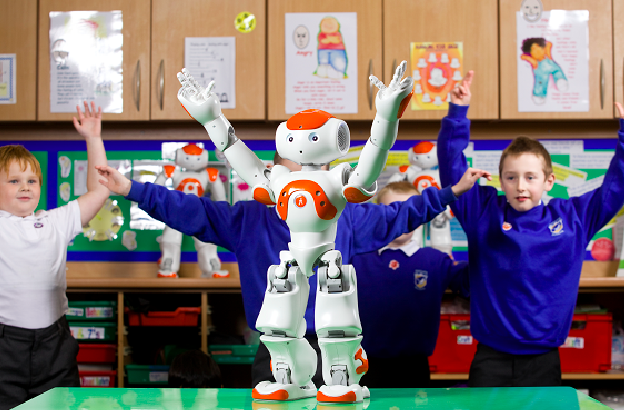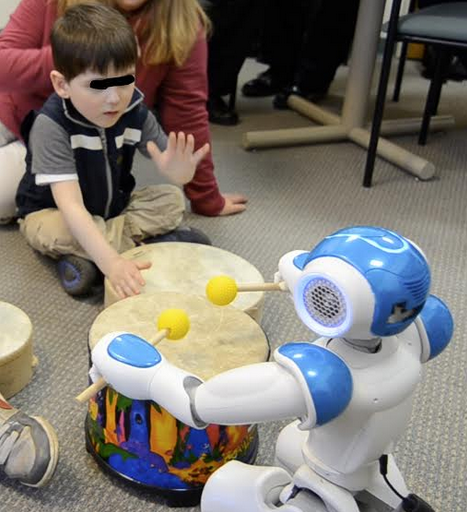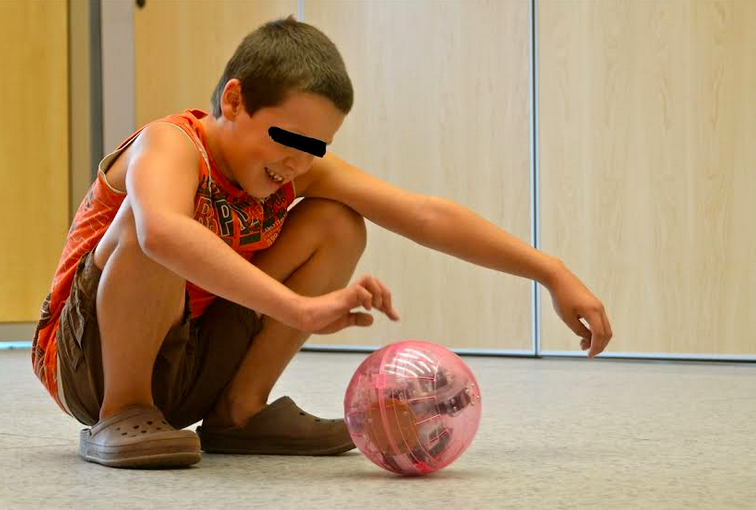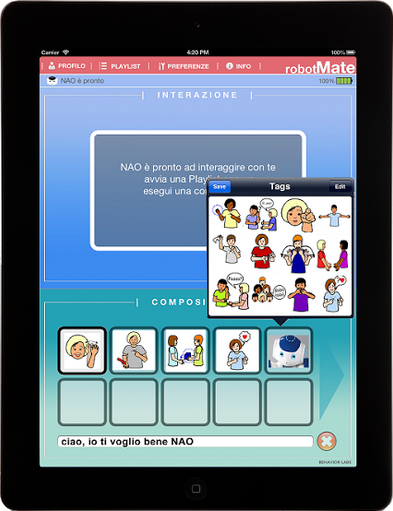
What’s autism? And can modern robots somehow help stimulate children with autism? These are some of the questions that I addressed in a recent conversation with Adrien Dequaire, a business developer specialized in Robotics.
I. Autism is a life-long social impairment affecting the way the person with autism communicates and relates to others
Autism is a spectrum condition and the acronym “ASD” stands for “Autism Spectrum Disorder”, meaning there is a lot of different ways a person can have autism. Because autism conditions are very diverse, some educators say that “when you have seen a child with autism, you have seen a child with autism”, inferring that it is difficult or not helpful to generalize too much about autism. Conversely, Raymond, the main character in the famous movie “Rain Man” has both autism and an extraordinary gift for math calculus but that stereotype can be misleading as the people with savant-like skills are only a very tiny minority among all the people with autism (3). Finally, it is good practice to say “people with autism” or “children with autism” instead of “autistic people” or “autistic children” because in so doing, we do not reduce the person to his or her autistic condition.
Because autism is a spectrum condition, giving a general description of how autism translates into everyday life is difficult and thus we will just give a few examples inspired from the UK National Autistic Society web site (4). For a start, autism can translate in a difficulty with social communication and people with autism may have difficulties understanding the meaning of different tones of voice (a child might not understand and obey a teacher who scolds him with a harsh tone of voice) or double meanings (when hearing “this car is cool”, the person might understand “this car has a low temperature” and that will lead to misunderstanding if it’s a hot day). Autism can also translate into a difficulty with social body language and for example, a woman with autism might not understand unwritten social conversation rules and might get hold of the hand of the man she is talking to and stand very close to him during the conversation, thus possibly upsetting the man she is having a conversation with. At school, a boy with autism might prefer playing alone by himself rather than with his school mates and might also have difficulties doing pretend play (ie, pretending to cook by using a child cooking set). This loneliness at school can unfortunately lead to this boy with autism being bullied by the other children on the playground. As a third example, autism can also translate into a difficulty with social imagination and a child with autism might not perceive well the concept of danger and suddenly start running without notice in the middle of a busy road, thus creating real dangers for himself and the car drivers. In other cases, the person with autism could be unable to face unplanned events and need to act in a routine; for example if every day the child takes the 8:05 bus to school and one day misses the bus, he might not imagine that he could take the next bus to school and become very stressed and lost (the importance of routines can be seen in some of the scenes of the movie “Rain Man”).
What causes autism still remains unclear but it seems that there is a strong genetic cause along with environmental causes. There once was a popular but misleading theory that the vaccines campaigns had caused autism but we now know from scientific studies that this is false. Today, according to statistical figures, approximately one child out of 80 is supposed to be later on diagnosed with autism and there are more boys than girls with autism. In the last few decades, this percentage of children diagnosed with autism has risen and the full cause of this increase seems unclear, although increased awareness coupled to the fact that the definition of “autism” is now referring to a wider range of disorders than in the previous years seems to be a cause (5).
As to how to help children and adults with autism better socially interact with other people, it appears that in some cases, specific help can improve the person’s social capabilities. However, a lot of different schools of thoughts and methods exist worldwide (sometimes even in bitter entrenched conflicts like in France between psychoanalysis supporters and behavioral supporters). In the end, educators and families should strive to do what is best for the particular child’s well being, taking into consideration the child’s unique persona.
II. Like modern Pinocchios, it seems that robots could help stimulate children with autism
A human-looking robot (ie, a robot – pieces of plastics, motors, electricity and programs bundled together- with human-looking characteristics: head, legs, arms, speech ability, movement ability) is like a modern Pinocchio: it will stir inside a child or an adult emotions because it will seem to the person that the robot is a living creature, able to understand and interact with him or her (6).
Based on the ability of machines to stir emotions within people, it seems robots could take out a bit of the stress out of children with autism by being repetitive and “patient”: the robot, will never “have a bad day” like human educators could and the robot will not give out a negative comment on the child’s performance and stress the child. The robot could in some cases take over some repetitive tasks (like showing pictures of animals) (8) and thus relieve the educator. Indeed, among special educators, it seems that working with children with autism is deemed particularly difficult because the educator cannot let himself or herself be tired and for example the educator must strive to keep a neutral tone of voice (a “non judgmental” tone of voice) when admonishing the child because otherwise, the child might get stressed. It also seems that in some cases, if the child with autism does not understand the question asked, the educator must rephrase it in the exact same way, with the exact same wording and tone of voice – which is strenuous for the educator – because otherwise the child might think that he or she is asked a different question (this seems to be linked to the fact that some children with autism need more time to “process” the questions they are being asked). The fact that the robot can be slow also seems to be an asset for some children with autism who need to take a lot of time to respond or perform a task (on this matter, it seems people with autism enjoy communicating with emails because they can take all the time they want to reply, unlike usual face to face discussions). Furthermore, robots seem also to be able to decrease the stress of children with autism by sending them less stressful human signals (for example, a child with autism could be stressed by being looked into the eyes, something that a robot cannot do).
Robots could also be helpful to carry out imitation tasks (9) with the children. If the robot has a pair of arms for example, coupled with vision and speech recognition, it could replicate the child’s body movements and vice versa, or the robot could sit down and induce the children to do so too (the child could also order the robot to sit down). Three dimensions imitation seems all the more interesting than traditional tablet-based applications fail to provide imitation games because they are confined to flat screens (10).

The humanoid robot Nao can be imitated by children fairly easily and when it comes to the robot imitating children, as for all other robots, the task is more difficult because it requires good vision recognition and speed.

Movia Robotics has developed musical applications that allow the robot to replicate with drums the rhythm that the child is playing on the tambourine and vice versa.
Regarding the shape though, a robot does not necessarily need to be humanoid to stir emotions and the ball-shaped Queball (7) or Star Wars’R2D2 or even 2001 Space Odissey’s HAL seem to be able to stir emotions and interact with people just as well. The non-humanoid shape is also an interesting alternative because it is cheaper to build. Indeed, building an efficient humanoid robot is quite complicated and expensive, especially when it comes to building legs that actually walk properly (wheels could be simpler and cheaper for example). This is especially important for special schools working with children with autism that are very price sensitive and run on tight budgets.

The non-humanoid robot Queball can roll around, play sounds (giggling for example) and display different colors to stir emotions.
Finally, in this very specific field of robotics, it is important to keep asking what, in the child’s interest and wellbeing, is the purpose and educative goal of using a robot. The relationship between the child and the human educator is at the core of the child’s education and the robot does not have the goal to replace the educator. Unlike in industrial robotics where the robot sometimes has the purpose of replacing a human worker for dirty, dangerous or demanding tasks, the robot’s role here is to be a tool to help the educator. This research field brings about ethical questions on what is a good educative relationship. In my opinion, I think robots will never replace humans in this field and I disagree with the theory that humans are just advanced robots made of flesh and bones, but that’s another subject.
III. Rigorous evidence-based clinical studies are now needed to make great robotic products
Now that it seems that there are opportunities to use robots in special education, robot manufacturers should carry out field studies to find and test the ways robots could be used in special education. Western medicine is based on evidence and it should be the same for robotics and special education.This can be done by partnering with autism centers and robot manufacturers could sit down around the table with small panel groups of parents, educators, children, as well as developers of autism applications for tablets and test robotic applications. Feedback should stream from the field up to the companies.
It is all the more important to pay great attention to feedback from educators, families and people working daily with children with autism as some of their needs are not easy to guess for traditional IT developers and marketers unfamiliar with special education. For example, when a robot speaks, it seems that other robot activities should be limited or stopped (like arm movements or blinking lights) so as not to distract the child’s attention. As for all great product developments, attention to details must be great and educators, children and families should closely work with robot manufacturers and researchers in order to create applications that meet the field’s requirements.
Article links
(1) Adrien Dequaire is a business developer based in Paris currently looking for a job in robotics, he could set up the European affiliate of a US robotics company for example / adrien.dequaire@gmail.com / +33 760516985
(2) Blue Ocean Robotics in Denmark is a specialist in developing robot applications on various platforms to support specific training sessions for learning children with autism particular social skills:: http://www.blue-ocean-robotics.com/ +45 2510 5431
(3) Rain Man is still a nice moving movie to watch I think. I would also recommend watching “Temple Grandin”, another movie about Temple Grandin, a contemporary woman with autism who invented new innovative ways to build cattle-friendly ranches in the USA (a moving story although it seems that most children with autism do not make it to phd levels).
(4) www.autism.org – the UK National Autistic Society website, a good website to learn more about autism
(5) Today, diagnosis of autism usually occurs after the child is a few years old old, ie not at birth and diagnosis sometimes includes testing the child’s ability to point at objects for example. Read more about autism prevalence on the US government Center for Disease Control (although “disease” may not be the best word to qualify autism): http://www.cdc.gov/features/autismprevalence/
(6) The movies « Robot and Franck “ or the Star Wars trilogy show how humans can relate to robotic companions.
(7) The Queball robot is a ball-shaped robot developed by the US company Que Innovation http://queinnovations.com / 05405-1757
(8) Aldebaran Robotics, the leading humanoid robotics manufacturer, is pushing ahead with robotics and autism and has created a dedicated website for its robot NAO and special education: http://asknao.aldebaran-robotics.com
(9) Movia Robotics has developed musical imitation applications for the robot Nao and children with autism : http://moviarobotics.com / (860) 881-2228. In some cases and for some children with autism, it seems music can be helpful as this moving video shows by Apte Autisme: http://vimeo.com/47353358 (in french) / http://www.apte-autisme.net/
(10) Auticiel is one of many editors of tablet-based applications for special education. I think these kind of companies should be involved in developing robotic applications for special education. http://www.auticiel.com/en/
Other links:
Behaviour Labs, an italian company, has created RoboMate, a platform to link tablet-based applications using symbols with a humanoid robot for children with autism and their educators/ http://www.blabs.eu/ info@blabs.eu

The tablet application developed by Behaviour Labs allows the educator and the child, using Pecs (Picture Exchange Communication System) symbols, to deliver behaviors to the robot. It’s interesting because nowadays lots of educators working with children with autism use tablet applications.
A description of five robots that can be used for special education can be found here: http://www.takepart.com/photos/five-coolest-robots-kids-autism/my-keepon
[…] Autism is a spectrum condition and the acronym “ASD” stands for “Autism Spectrum Disorder”, meaning there is a lot of different ways a person can have autism. Because autism conditions are very diverse, some educators say that “when you have seen a child with autism, you have seen a child with autism”, inferring that it is difficult or not helpful to generalize too much about autism. Conversely, Raymond, the main character in the famous movie “Rain Man” has both autism and an extraordinary gift for math calculus but that stereotype can be misleading as the people with savant-like skills are only a very tiny minority among all the people with autism (3). Finally, it is good practice to say “people with autism” or “children with autism” instead of “autistic people” or “autistic children” because in …read more […]
What causes autism still remains unclear but it seems that there is a strong genetic cause along with environmental causes.
Sound Testing specialising in Acoustic Services in London and the South East.